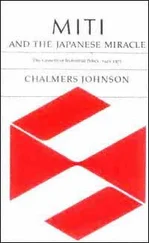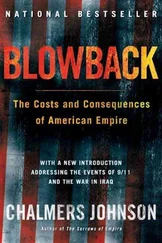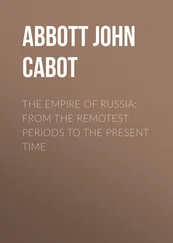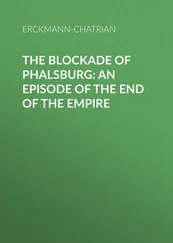Chalmers Johnson - Dismantling the Empire
Здесь есть возможность читать онлайн «Chalmers Johnson - Dismantling the Empire» весь текст электронной книги совершенно бесплатно (целиком полную версию без сокращений). В некоторых случаях можно слушать аудио, скачать через торрент в формате fb2 и присутствует краткое содержание. Год выпуска: 2010, Издательство: Metropolitan Books, Жанр: Старинная литература, на английском языке. Описание произведения, (предисловие) а так же отзывы посетителей доступны на портале библиотеки ЛибКат.
- Название:Dismantling the Empire
- Автор:
- Издательство:Metropolitan Books
- Жанр:
- Год:2010
- ISBN:нет данных
- Рейтинг книги:5 / 5. Голосов: 1
-
Избранное:Добавить в избранное
- Отзывы:
-
Ваша оценка:
- 100
- 1
- 2
- 3
- 4
- 5
Dismantling the Empire: краткое содержание, описание и аннотация
Предлагаем к чтению аннотацию, описание, краткое содержание или предисловие (зависит от того, что написал сам автор книги «Dismantling the Empire»). Если вы не нашли необходимую информацию о книге — напишите в комментариях, мы постараемся отыскать её.
Dismantling the Empire — читать онлайн бесплатно полную книгу (весь текст) целиком
Ниже представлен текст книги, разбитый по страницам. Система сохранения места последней прочитанной страницы, позволяет с удобством читать онлайн бесплатно книгу «Dismantling the Empire», без необходимости каждый раз заново искать на чём Вы остановились. Поставьте закладку, и сможете в любой момент перейти на страницу, на которой закончили чтение.
Интервал:
Закладка:
The money flowing from the kingdom arrived at the Afghan frontier in all shapes and sizes: gold jewelry dropped on offering plates by merchants’ wives in Jedda mosques; bags of cash delivered by businessmen to Riyadh charities as zakat, an annual Islamic tithe; fat checks written from semi-official government accounts by minor Saudi princes; bountiful proceeds raised in annual telethons led by Prince Salman, the governor of Riyadh.
Richest of all were the annual transfers from the Saudi General Intelligence Department, or Istakhbarat, to the CIA’s Swiss bank accounts.
From the moment that agency money and weapons started to flow to the mujahideen in late 1979, Saudi Arabia matched the U.S. payments dollar for dollar. They also bypassed the ISI and supplied funds directly to the groups in Afghanistan they favored, including the one led by their own pious young millionaire Osama bin Laden. According to the CIA’s Milton Bearden, private Saudi and Arab funding of up to $25 million a month flowed to Afghan Islamist armies. Equally important, Pakistan trained between 16,000 and 18,000 fresh Muslim recruits on the Afghan frontier every year, and another 6,500 or so were instructed by Afghans inside the country beyond ISI control. Most of these eventually joined bin Laden’s private army of 35,000 “Arab Afghans.”
Much to the confusion of the Americans, moderate Saudi leaders, such as Prince Turki, the intelligence chief, supported the Saudi backing of fundamentalists so long as they were in Afghanistan and not in Saudi Arabia. A graduate of a New Jersey prep school and a member of Bill Clinton’s class of 1964 at Georgetown University, Turki belonged to the pro-Western, modernizing wing of the Saudi royal family. But that did not make him pro-American. Turki saw Saudi Arabia in continual competition with its powerful Shia neighbor Iran. He needed credible Sunni, pro-Saudi Islamist clients to compete with Iran’s clients, especially in countries like Pakistan and Afghanistan, which have sizable Shia populations.
Prince Turki was also irritated by the United States’ loss of interest in Afghanistan after its Cold War skirmish with the Soviet Union. He understood that the United States would ignore Saudi aid to Islamists so long as his country kept oil prices under control and cooperated with the Pentagon on the building of military bases. Like many Saudi leaders, Turki probably underestimated the longer-term threat of Islamic militancy to the Saudi royal house but, as Coll observes, “Prince Turki and other liberal princes found it easier to appease their domestic Islamist rivals by allowing them to proselytize and make mischief abroad than to confront and resolve these tensions at home.” In Riyadh, the CIA made almost no effort to recruit paid agents or collect intelligence. The result was that Saudi Arabia worked continuously to enlarge the ISI’s proxy jihad forces in both Afghanistan and Kashmir, and the Saudi Ministry for the Propagation of Virtue and the Prevention of Vice, the kingdom’s religious police, tutored and supported the Taliban’s own Islamic police force.
By the late 1990s, after the embassy bombings in East Africa, the CIA and the White House awoke to the Islamist threat, but they defined it almost exclusively in terms of Osama bin Laden’s leadership of al-Qaeda and failed to see the larger context. They did not target the Taliban, Pakistani military intelligence, or the funds flowing to the Taliban and al-Qaeda from Saudi Arabia and the United Arab Emirates. Instead, they devoted themselves to trying to capture or kill bin Laden. Coll’s chapters on the hunt for the al-Qaeda leader are entitled “You Are to Capture Him Alive,” “We Are at War,” and “Is There Any Policy?” but he might more accurately have called them “Keystone Kops” or “The Gang That Couldn’t Shoot Straight.”
On February 23, 1998, bin Laden summoned newspaper and TV reporters to the camp at Khost that the CIA had built for him at the height of the anti-Soviet jihad. He announced the creation of a new organization—the International Islamic Front for Jihad against Jews and Crusaders—and issued a manifesto saying that “to kill and fight Americans and their allies, whether civilian or military, is an obligation for every Muslim who is able to do so in any country.” On August 7, he and his associates put this manifesto into effect with devastating truck bombings of the U.S. embassies in Kenya and Tanzania.
The CIA had already identified bin Laden’s family compound in the open desert near Kandahar Airport, a collection of buildings called Tarnak Farm. It’s possible that more satellite footage had by then been taken of this site than of any other place on earth; one famous picture seems to show bin Laden standing outside one of his wives’ homes. The agency conceived an elaborate plot to kidnap bin Laden from Tarnak Farm with the help of Afghan operatives and spirit him out of the country, but CIA director George Tenet canceled the project because of the high risk of civilian casualties; he was resented within the agency for his timidity. Meanwhile, the White House stationed submarines in the northern Arabian Sea with the map coordinates of Tarnak Farm preloaded into their missile guidance systems. They were waiting for hard evidence from the CIA that bin Laden was in residence.
Within days of the East Africa bombings, Clinton signed a top secret Memorandum of Notification authorizing the CIA to use lethal force against bin Laden. On August 20, 1998, he ordered seventy-five cruise missiles, costing $750,000 each, to be fired at the Zawhar Kili camp (about seven miles south of Khost), the site of a major al-Qaeda meeting. The attack killed twenty-one Pakistanis but bin Laden was forewarned, perhaps by Saudi intelligence. Two of the missiles fell short into Pakistan, causing Islamabad to denounce the U.S. action. At the same time, the United States fired thirteen cruise missiles into a chemical plant in Khartoum: the CIA claimed that the plant was partly owned by bin Laden and that it was manufacturing nerve gas. The agency knew none of this was true.
Clinton had publicly confessed to his sexual liaison with Monica Lewinsky on August 17, and many critics around the world conjectured that both attacks were diversionary measures. (The film Wag the Dog had just come out, in which a president in the middle of an election campaign is charged with molesting a Girl Scout; the script makes it seem as if he’s gone to war against Albania to distract people’s attention.) As a result, Clinton became more cautious, and he and his aides began seriously to question the quality of CIA information. The U.S. bombing in May 1999 of the Chinese embassy in Belgrade, allegedly because of faulty intelligence, further discredited the agency. A year later, Tenet fired one intelligence officer and reprimanded six managers, including a senior official, for their bungling of that incident.
The Clinton administration made two more attempts to get bin Laden. During the winter of 1998–99, the CIA confirmed that a large party of Persian Gulf dignitaries had flown into the Afghan desert for a falcon hunting party, and that bin Laden had joined them. The CIA called for an attack on their encampment, until Richard Clarke, Clinton’s counterterrorism aide, discovered that among the hosts of the gathering were royalty from the United Arab Emirates. Clarke had been instrumental in a 1998 deal to sell eighty F-16 military jets to the UAE, which was also a crucial supplier of oil and gas to America and its allies. The strike was called off.
THE CIA AS A SECRET PRESIDENTIAL ARMY
Throughout the 1990s, the Clinton administration devoted major resources to the development of a long-distance drone aircraft called Predator, invented by the former chief designer for the Israeli air force, who had immigrated to the United States. In its nose was mounted a Sony digital TV camera, similar to the ones used by news helicopters reporting on freeway traffic or on O. J. Simpson’s fevered ride through Los Angeles. By the turn of the century, agency experts had also added a Hellfire antitank missile to the Predator and tested it on a mockup of Tarnak Farm in the Nevada desert. This new weapons system made it possible to kill bin Laden instantly if the camera spotted him. Unfortunately for the CIA, on one of its flights from Uzbekistan over Tarnak Farm the Predator photographed as a target a child’s wooden swing. To his credit, Clinton held back on using the Hellfire because of the virtual certainty of killing bystanders, and Tenet, scared of being blamed for another failure, suggested that responsibility for the armed Predator’s use be transferred to the Air Force.
Читать дальшеИнтервал:
Закладка:
Похожие книги на «Dismantling the Empire»
Представляем Вашему вниманию похожие книги на «Dismantling the Empire» списком для выбора. Мы отобрали схожую по названию и смыслу литературу в надежде предоставить читателям больше вариантов отыскать новые, интересные, ещё непрочитанные произведения.
Обсуждение, отзывы о книге «Dismantling the Empire» и просто собственные мнения читателей. Оставьте ваши комментарии, напишите, что Вы думаете о произведении, его смысле или главных героях. Укажите что конкретно понравилось, а что нет, и почему Вы так считаете.










